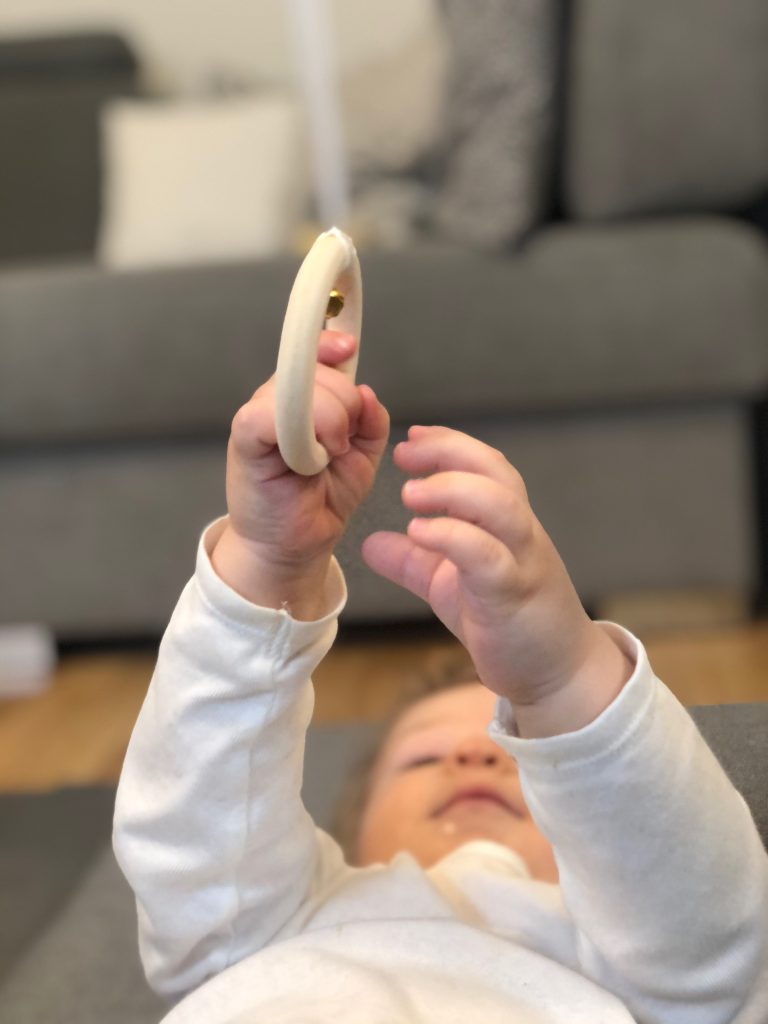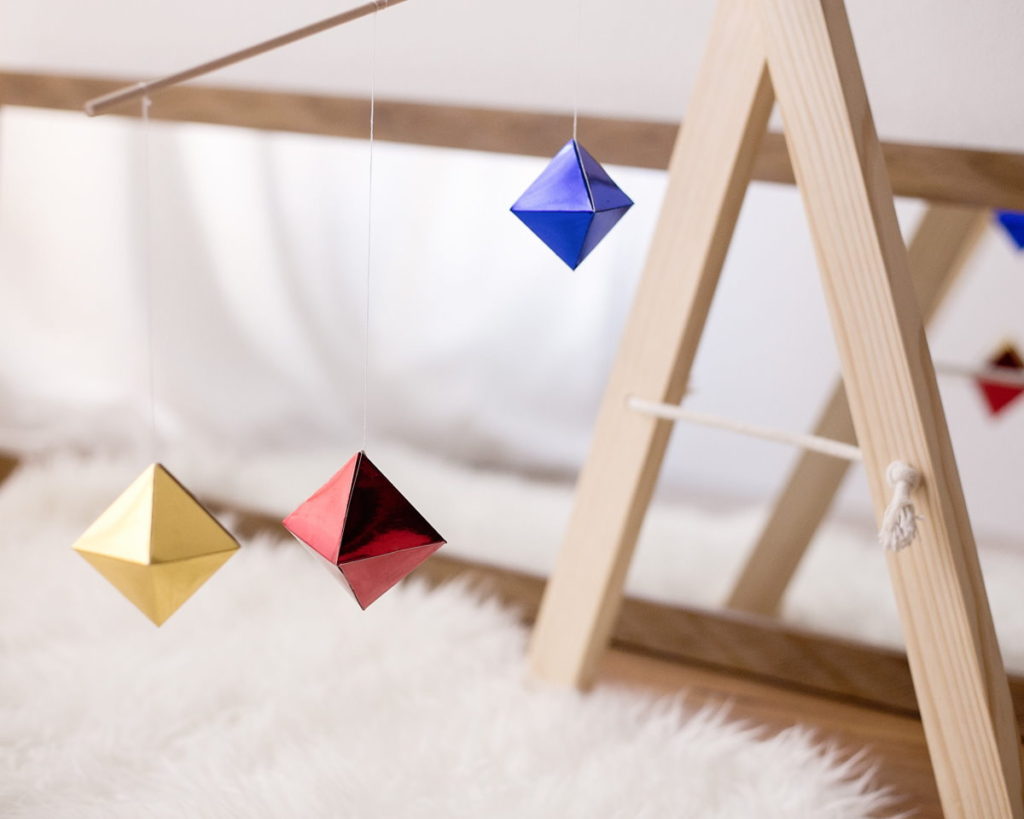The Montessori philosophy is such a big topic, it would take several blog post to talk about all of its aspects! In this post I am going to focus on the Montessori prepared environment and would pick out a few aspects to introduce in a short and concise manner. With this in mind, I chose the ones that in my opinion are the most relevant to the youngest of babies. I have a feeling that this post is going to grow in the future, so keep an eye on it! For now, let’s have a look at few important points.
1. The prepared environment
Maria Montessori believed that children under 3 years of age don’t learn consciously but simply absorb everything around them. She called this the ‘unconscious absorbent mind’. Let’s think about this for a second. What does it mean for us?
This means that where they are and what they do shape who they become. Meaning, that the environment has a huge (and I mean HUGE!) impact on their development. In the Montessori world we call the Montessori prepared environment the ‘third teacher’. It has just as much of an impact as an adult or the baby’s own agency. What we have to keep in mind though, is that it is not constant but changes and adapts to your baby’s developmental needs. Observe, make changes if necessary and repeat.

This is a lovely example of the evolution of a prepared environment from birth to one years old. It’s worth reading the whole blog post, if you have a minute.
2. Independence
‘Help me to help myself’ is probably the most used Maria Montessori quote in the world. But newborn babies are so helpless, completely reliant on us to keep them alive, how should we give them more independence? Yes, we spend most of our days holding them, feeding them, doing things for them. But when they are ready (I mean clean, well-fed, alert, ready to ‘work’), we can put them down and give them a chance to independently take in the world around them.
In a Montessori prepared environment, allow them to lie on a movement mat and give them opportunity to enjoy the freedom of movement in a safe and secure environment. Give them a Montessori mobile to interact with and explore independently, without telling them or showing them what to do. Give them time to discover the world around them as long as they want, alone. They are very good at telling us when they have had enough and want us again. First, this might only take a couple of minutes and that’s ok. Sit down with your baby, act on their clues and watch their delight in learning.

3. Respect
According to Maria Montessori, „children are human beings to whom respect is due” and this means from day 1 (or even earlier, in the womb). We, as a society, tend to think of babies as a helpless, vulnerable group. They undoubtedly are, but I think we should focus on other aspects here such as the fact that they are breathing, feeling, unique human beings. Things shouldn’t be done ’to’ them but ’with’ them.
How does respect ’look’ in practical, everyday situations? The way we observe them and how we respond to their physical and developmental needs. How we make each caregiving moment an opportunity to connect. The way we talk to them and listen to them. The secure environment we provide for them so they feel safe to explore the world.
And the way we sometimes just simply snuggle with them, with no agenda in mind. Just us, together.
If you’d like to know more, head over to the How We Montessori blog, there’s a lovely post about ’Ways to Respect the Baby’.
4. Trust
Newborn babies are tiny in size but they are more capable than we think! All we need to do is trust them. It is REALLY hard sometimes, especially when the whole world tells us otherwise, but that’s what Maria Montessori advocated. We don’t need to push them. We don’t need to have expectations. Trust them to know how much milk they need (gasp!), how much sleep they need (double gasp!) and at what pace to develop. They know exactly what they need and know how to demand it! All we need to do is to observe them, listen to them and trust them.
5. Order
It might sound strange when talking about brand-new babies but all children prefer external order. This means that the space around them is clean, safe and everything has its own place. This will be important later as Montessori believes that external order in turn fosters internal order. This is an essential characteristic to have later, for example when children have to do actions requiring a long sequence of steps (tying shoe laces, doing addition, remembering a story etc. It’s advised to start to adhere to this from the child’s first day on Earth.
6. Simplicity
Good news, your baby does not need any toys for at least a good half a year! (Read about why I don’t think babies play at all in this post.) In the first few months all they will be doing is sleeping, eating and wanting to feel loved. Little ones prefer peace, quiet and a calming environment. In order to achieve this, in a Montessori environment you won’t find bright coloured, flashing, noisy plastic toys.
Newborns are such small things, it’s easy for them to become overstimulated from lights, noise or perpetual movement. The only Montessori materials intended for babies are the Montessori mobiles, read about them in this post.
What we’re aiming for is creating a beautiful but simple, tranquil space where your baby is safe from over-stimulation and can focus on their own “work”. This consists of exploring and learning about the world and trying to make sense of it. You can help this process by surrounding your baby with calming, pastel colours and, wherever it is possible, using natural materials.
Let’s try to get fewer but better quality items. Here, less is definitely more! Read more about the Montessori baby’s working space in this post.

7. Accessible material
Accessible materials play a crucial role in the Montessori philosophy as they enable children to actively engage in their learning and foster independent exploration. A Montessori environment focuses the use of hands-on materials that are designed to be accessible and self-correcting, allowing children to learn at their own pace. These materials are carefully crafted to provide concrete experiences that promote sensory development, cognitive skills, and problem-solving abilities. By providing accessible materials, Montessori education encourages children to develop concentration, coordination, and critical thinking skills. This approach ensures that every child, regardless of their abilities or learning style, can fully participate in the learning process, experience success, and develop a deep understanding of various concepts.
A huge part of this is using a Montessori floor bed and Montessori shelves. Read more about them following the links.
FINAL THOUGHTS
These are the elements of the Montessori philosophy that I consider the most important ones in a Montessori prepared environment for babies 0-6 months old. If you’d like to know more about the Montessori philosophy, head over to this post for my Montessori book suggestions. There are many Montessori bloggers out there who delve deeper into the subject and are worth reading and following. These are my personal favourites: http://www.thekavanaughreport.com/, https://livingmontessoinow.com/ and https://www.howwemontessori.com/.
If you’d like to read my practical tips on how to set up a Montessori baby space, click on the next post.
